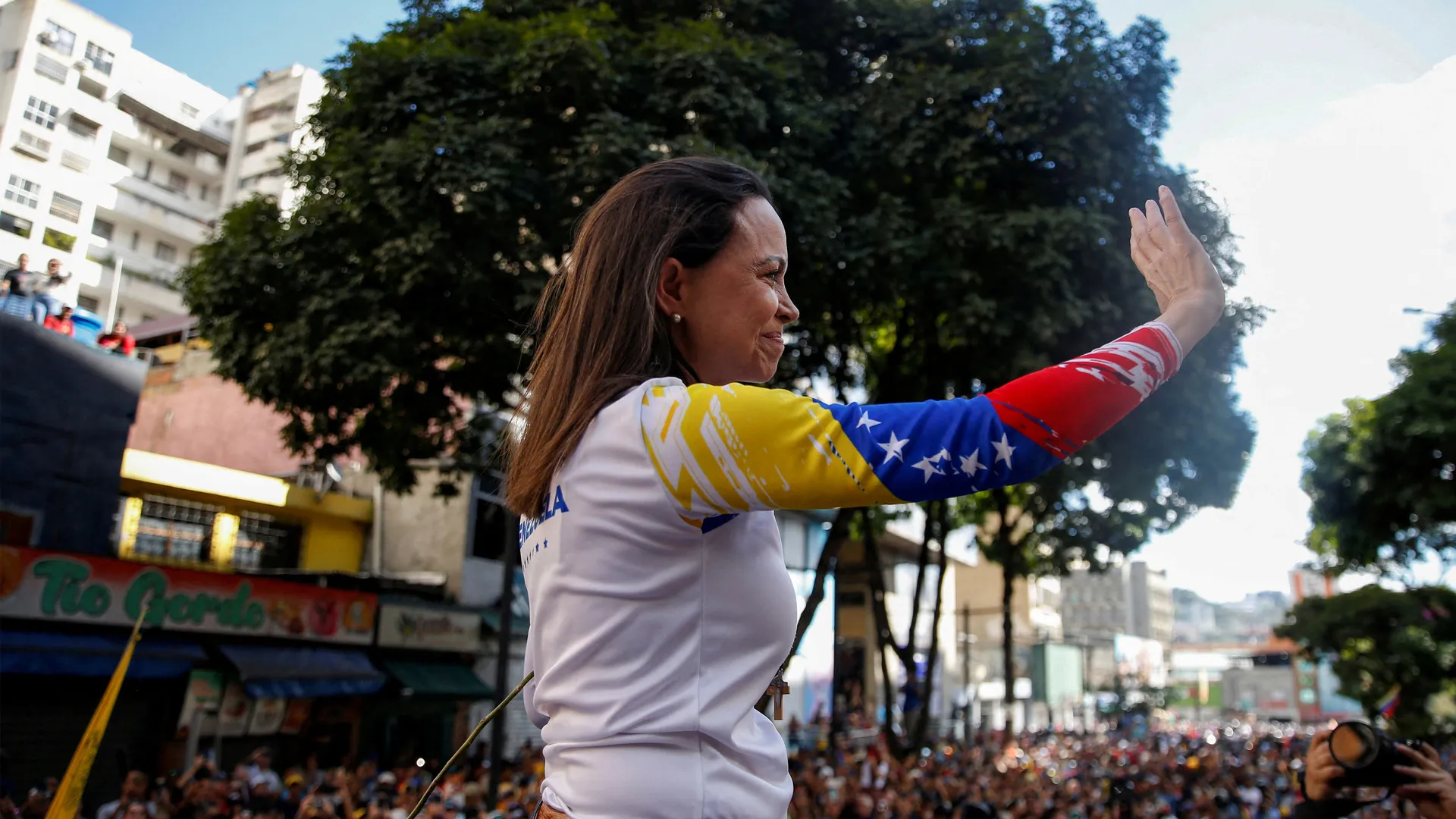Venezuelan opposition leader Maria Corina Machado will not receive the Nobel Peace Prize in person at an award ceremony in Oslo but she will be in the European city, the director of the Norwegian Nobel Institute has said.
Machado, 58, was due to receive the award on Wednesday at Oslo City Hall in the presence of Norway’s monarchs and Latin American leaders, including fellow right-wing politicians Argentinian President Javier Milei and Ecuadorean President Daniel Noboa.
Recommended Stories
list of 4 itemsend of list
The opposition leader of the Vente Venezuela party was awarded the prize in October, with the Nobel committee praising Machado’s role in the country’s opposition movement and her “steadfast” support for democracy.
Machado, who holds many right-wing views, dedicated it in part to United States President Donald Trump, who has said he, himself deserved the honour and was infuriated that he did not.
“Although she will not be able to reach the ceremony and today’s events, we are profoundly happy to confirm that Machado is safe and that she will be with us in Oslo,” the institute stated.
She is expected to reach Oslo “sometime between this evening and tomorrow morning,” the institute’s director Kristian Berg Harpviken told the AFP news agency on Wednesday, shortly before the 1pm (12:00 GMT) ceremony, at which her daughter, Ana Corina Sosa Machado, is set to accept the award in her place.
“I will be in Oslo, I am on my way,” Machado stated in an audio recording released by the institute.
The announcement was part of a sequence of events more befitting of cloak-and-dagger intrigue, as the institute had earlier stated Machado’s whereabouts were unknown. A planned news conference a day earlier was also cancelled due to her absence.
Machado has a decade-long travel ban on her and has spent more than a year in hiding.
Alignment with right-wing hawks
The political leader has welcomed international sanctions and US military intervention in Venezuela, a move her critics say harkens back to a dark past.
The US has a long history of interference in the region, particularly in the 1980s when it propped up repressive right-wing governments through coups, and funded paramilitary groups across Latin America that were responsible for mass killings, forced disappearances and other grave human rights abuses.
Venezuelan authorities cited Machado’s support for sanctions and US intervention when they barred her from running for office in last year’s presidential election, where she had intended to challenge President Nicolas Maduro. Machado has accused Maduro of stealing the July 2024 election.
Shortly after her Nobel win in October, Machado also voiced support for Israel in a phone call with Prime Minister Benjamin Netanyahu, during its ongoing genocidal war in Gaza.
Machado has previously pledged to move Venezuela’s embassy in Israel to Jerusalem, as Trump did with the US diplomatic presence during his first term in office, if her movement comes to power. This would be on par with other right-wing Latin American leaders who have taken pro-Israel stances, including Argentina’s Milei and former Brazilian President Jair Bolsonaro.
Machado has aligned herself with right-wing hawks close to Trump who argue that Maduro has links to criminal gangs that pose a direct threat to US national security, despite doubts raised by the US intelligence community.
The Trump administration has ordered more than 20 military strikes in recent months against alleged drug-trafficking vessels in the Caribbean and off Latin America’s Pacific coast.
Human rights groups, some US Democrats and several Latin American countries have condemned the attacks as unlawful extrajudicial killings of civilians.
Maduro, in power since 2013 following the death of Hugo Chavez, says Trump is pushing for regime change in the country to access Venezuela’s vast oil reserves. He has pledged to resist such attempts.
Venezuela’s armed forces are planning to mount a guerrilla-style resistance in the event of a US air or ground attack, according to sources with knowledge of the efforts and planning documents seen by the Reuters news agency.

